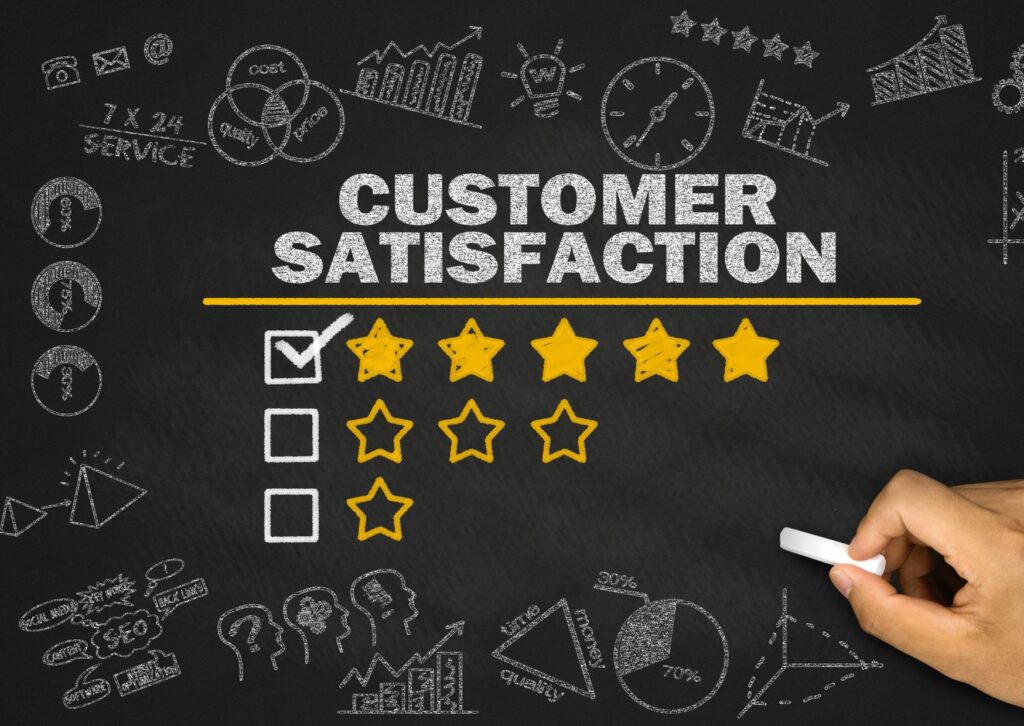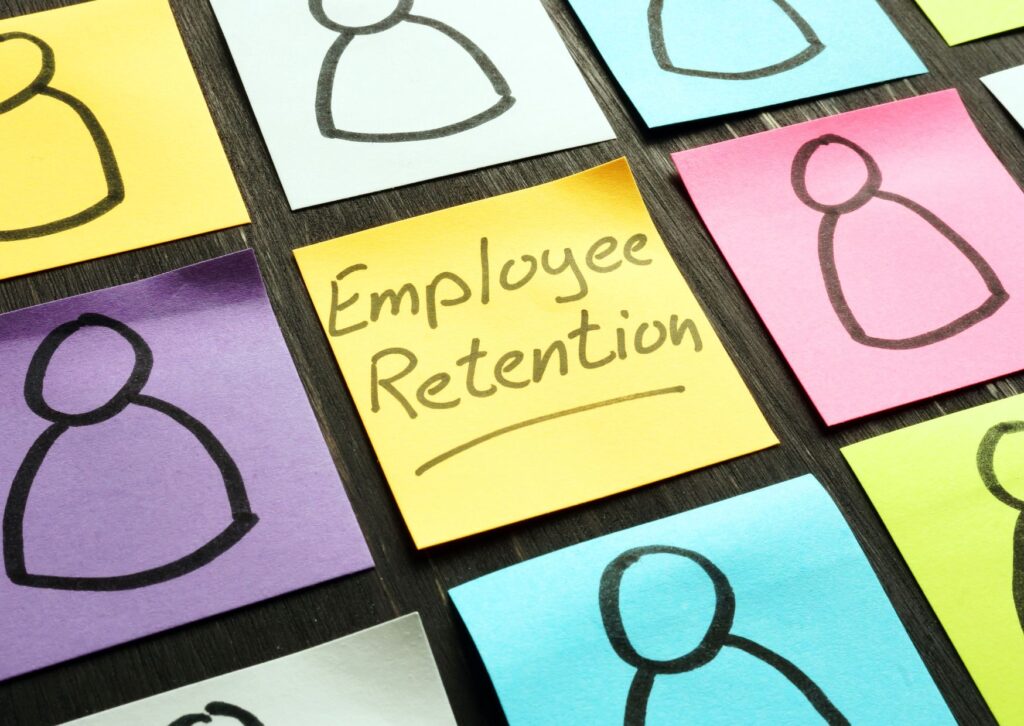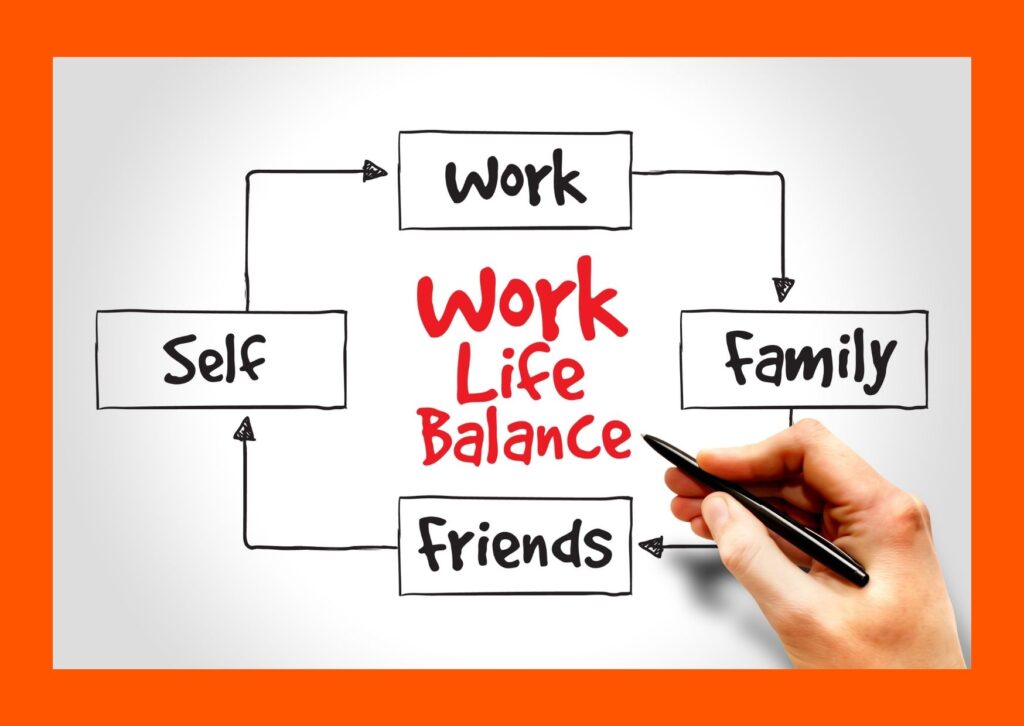10 Ways to Create Employee Happiness!
We spend a significant chunk of our lives at work, so why shouldn’t it be a place of Happiness?
Employee happiness is not just about a smiley face at the office—it’s about creating a fulfilling, balanced, and engaging work life.
It’s a win-win situation that benefits both employees and businesses.
Let’s unpack the magic behind employee happiness, why it matters, and how you can cultivate and measure it in your workplace.
Contents
The Man with the Happiest Workforce! (Video)
Why is Employee Happiness Important in the Workplace?
The Connection Between Employee Happiness and Business Success
How Can Employee Happiness Contribute to Customer Satisfaction
How Can Employee Happiness Increase Employee Retention
10 Components of Employee Happiness
Strategies to Increase Employee Happiness
How to Measure Employee Happiness

The Man with the Happiest Workforce! (Video)
What is Employee Happiness?
Employee happiness – sounds simple, right? But there’s more to it than just a sunny disposition at the water cooler.
It’s about feeling good at work, and even when you think about work.
It’s about waking up and looking forward to the day, not dreading it.
Happiness at work isn’t just about loving what you do, although that’s a big part of it.
It’s also about feeling valued and appreciated.
It’s about knowing you are part of a team, and that your work matters.
Imagine this. You’re working in a place where you’re encouraged to grow.
You’ve been given opportunities to learn new skills, to step outside your comfort zone.
Colleagues and management recognise you for your efforts and accomplishments, both big and small.
How about this? Your boss and colleagues don’t just treat you as another cog in the machine, but as a human being.
They respect your time, your life outside work, and your need for balance.
They care about your mental health, your physical well-being, and your overall quality of life.
In short, employee happiness is about feeling good, valued, and cared for at work.
It’s about thriving, not just surviving, in the workplace.

Why is Employee Happiness Important in the Workplace?
Think about your favourite dessert.
Doesn’t it just make everything better?
Now, imagine if work could feel that good. That’s what we’re aiming for with employee happiness.
Happy employees aren’t just more pleasant to be around, they’re also more productive.
It’s simple: when we’re happy, we’re more engaged. We’re eager to contribute, to bring our best selves to the table.
Happiness also sparks creativity.
It’s like opening the floodgates of fresh ideas and innovative solutions.
Happy employees are problem solvers, ready to take on new challenges.
Happiness is also contagious. It can uplift the entire mood of a workplace.
And in a happy environment, teamwork thrives. People collaborate better, trust more, and conflict less.
And let’s not forget – happy employees stick around. They’re less likely to look for greener pastures.
This means lower turnover costs and a stronger, more experienced team.
But perhaps most importantly, prioritising happiness shows employees they’re valued.
Not just for their output, but as people. And when employees feel valued, they value their work in return.
So, the importance of happiness in the workplace?
It’s a no-brainer!
It boosts productivity, promotes creativity, encourages teamwork, and nurtures loyalty.
Above all, it creates a healthier, more human-centric work environment.
And that’s a win for everyone.

The Connection Between Employee Happiness and Business Success
Picture your workplace as a garden. Your employees are the plants, and happiness is the water that helps them flourish.
When they bloom, so does your business. That’s the connection between employee happiness and business success.
Happy employees are productivity powerhouses. They’re like turbocharged engines, driving your business forward.
They’re motivated, focused, and dedicated, and that has a direct impact on your bottom line.
Innovation is another area where happiness makes a huge difference.
Happy employees are more creative and open to new ideas.
They’re the ones who come up with those game-changing ideas that can propel your business to new heights.
Employee happiness also fuels employee loyalty.
Happy employees are less likely to quit, reducing turnover and its associated costs.
Plus, happy employees make for great brand ambassadors.
They’re more likely to talk positively about your company, attracting top talent and even new customers.
In short, employee happiness isn’t just a nice-to-have.
It’s a must-have for any business aiming for success.
It drives productivity, customer satisfaction, innovation, and loyalty.
And in the competitive world of business, those are major wins!

How Can Employee Happiness Contribute to Customer Satisfaction
Ever been served by a happy, smiling person? It feels good, doesn’t it?
Now that’s what we’re talking about when we say employee happiness can boost customer satisfaction.
Happy employees are like sunshine on a cloudy day. Their energy is infectious.
They spread positivity, and that leaves customers feeling good. And customers who feel good are more likely to return, and to recommend your business to others.
But it’s not just about the warm and fuzzies. Happy employees are also more motivated.
They take pride in their work, and it shows. They’re committed to providing the best service, and solving problems with a smile.
And let’s not forget – happy employees are more engaged. They’re in tune with the company’s mission, and they strive to deliver on it.
They’re more likely to understand and meet customers’ needs, leading to better experiences and higher satisfaction.
The bottom line? Employee happiness and customer satisfaction are two peas in a pod.
Happy employees create happy customers. And happy customers?
They’re the key to a successful business.
So, want to keep your customers satisfied? Start by keeping your employees happy!

How Can Employee Happiness Increase Employee Retention
Ever had a job that made you jump out of bed each morning? That’s what a happy employee feels like.
And when you’re that excited about work, why would you leave?
Employee happiness is like super glue—it sticks your team together and helps with employee retention.
When employees are happy at work, they’re less likely to go job hunting.
They’re content where they are, and that boosts retention.
Happy employees feel valued, respected, and heard.
They know they’re more than just a number. They have a sense of belonging, a connection with their team, and a purpose in their work.
These feelings can turn a job into a long-term commitment.
Plus, happiness fosters a positive work environment, making it a pleasant place to be.
Think about it—who’d want to leave a workplace where they’re surrounded by happy, supportive, and cooperative colleagues?
Moreover, happy employees see opportunities for growth and development in their current roles.
They’re not just working for a paycheck, but for personal and professional progress.
In a nutshell, happiness is a powerful tool for retaining your best employees.
It keeps them engaged, fulfilled, and loyal.
And retaining top talent not only saves you the cost and hassle of recruitment, it also ensures the continuity and success of your business.

10 Components of Employee Happiness
1. Recognition and Appreciation
Hearing a simple “thank you” or “great job” can light up an employee’s day. Regularly acknowledging hard work fuels motivation and happiness.
2. Healthy Work-Life Balance
When employees have time to relax, pursue hobbies, or be with family, they’re happier. Work-life balance is key.

3. Supportive Work Environment
A positive, inclusive workplace where everyone supports each other is a happiness booster.
It’s about fostering a culture of camaraderie and respect.
4. Job Security
Knowing they have a stable job reduces stress and contributes to an employee’s happiness.
No one likes feeling like they’re walking on thin ice!
5. Fair Compensation
Earning a fair wage for their work is a fundamental part of happiness. Money isn’t everything, but it sure does matter.
6. Opportunities for Growth
Employees who can learn, develop new skills, and climb the career ladder are happier.
Growth is a natural human desire.
7. Purposeful Work
Doing work that aligns with their values and contributes to a bigger purpose can make employees happier.
Purpose brings meaning to the grind.
8. Autonomy
Having the freedom to make decisions and manage their work leads to happier employees. Trust breeds confidence and satisfaction.
9. Healthy Relationships
Good relationships with colleagues and superiors are vital. Feeling connected and valued by others promotes happiness.
10. Wellbeing Support
An employer who cares about their employees’ physical and mental health scores big on the happiness scale.
Wellness initiatives like on-site massage or wellbeing workshops show employees they’re cared for beyond their output.
Strategies to Increase Employee Happiness
Elevating employee happiness isn’t just about business—it’s a matter of human wellbeing.
So, how do we shape a work environment that promotes not just productivity, but also the joy of being?
First, let’s emphasize the power of recognition and reward.
There’s magic in a heartfelt “thank you” or a personal note acknowledging a job well done.
This small act can do wonders for an employee’s sense of self-worth and happiness.
Then, there’s the work-life balance. Encourage employees to live fully, not just work hard.
A balanced employee is healthier, happier, and more productive.
This includes ensuring employees take their well-deserved vacation time and don’t burn the candle at both ends.
But the work environment itself also plays a crucial role. Cultivating a positive culture, one that’s steeped in respect, trust, and inclusivity, can uplift everyone’s spirits.
It’s about creating a space where everyone feels they belong.
When we talk about wellbeing, we can’t overlook the importance of job security.
When employees feel secure about their professional future, they can focus on doing their best work instead of worrying about what tomorrow holds.
Fair compensation also matters—a lot. Everyone deserves to be paid fairly for their labour.
Offering competitive salaries and benefits not only makes employees happier but also shows them they are genuinely valued.
And let’s not forget about growth opportunities.
Providing ongoing training and personal development opportunities not only enhances their skill set but also contributes to their sense of purpose, personal growth, and career satisfaction.
The power of autonomy in fostering happiness should not be underestimated.
When employees are given the trust and freedom to make decisions, it instils a sense of ownership and satisfaction that significantly contributes to happiness.
Wellbeing workshops, stress management sessions, and mental health initiatives play a critical role in cultivating happiness.

Encouraging employees to take care of their mental health helps foster a work environment where people feel cared for on a human level—not just as a worker.
Last, but certainly not least, keeping the company’s purpose clear is crucial.
When employees understand how their work contributes to the bigger picture, it instils a sense of pride and fulfilment that fuels happiness.
Remember, creating a happy workplace through wellbeing initiatives is not an overnight process, but a journey.
However, the result is a work environment where employees are not just surviving but thriving—a win for everyone involved!
How to Measure Employee Happiness
Measuring happiness might sound like trying to catch a cloud, but it’s actually doable.
Here’s how you can gauge the joy in your workplace.
1. Employee Satisfaction Surveys
These are your compass for navigating the landscape of employee happiness. Regular, anonymous surveys can help assess various factors like job satisfaction, work-life balance, and relationships with colleagues.
The more specific your questions, the more insightful your findings will be.

2. eNPS (Employee Net Promoter Score)
Employee Net Promoter Score is a way of measuring how likely your employees are to recommend your organisation as a good place to work.
This tool cuts to the chase with a simple yet telling question: “How likely are you to recommend this company as a place to work?”
Scoring this from 0 to 10 can give you a clear picture of employee happiness and loyalty. A high score means you’re on the right path!
3. One-on-One Check-ins
Don’t underestimate the power of a good old-fashioned conversation.
Regular check-ins with each team member can reveal a lot about their state of happiness.
This practice fosters an open dialogue, allowing you to directly ask about their happiness and any concerns they might have.
4. Observation of Behaviour
Look for signs of engagement and satisfaction in daily interactions.
Happy employees tend to actively participate in meetings, collaborate effectively with their team, and join company events.
Their energy and enthusiasm can be contagious, contributing to a positive workplace atmosphere.
5. Retention Rates
These can be a significant indicator of overall happiness.
High turnover might signal dissatisfaction, while a steady team suggests contentment.
Remember, if your employees are sticking around, you’re likely doing something right!
6. Feedback Channels
Encourage employees to express their feelings and thoughts about their work and the workplace through multiple channels.
This could be through anonymous suggestion boxes, digital platforms, or face-to-face communication.
The goal is to create an environment where employees feel their voice matters.
7. Wellbeing Assessments
Regular health and wellbeing assessments can reveal how your wellbeing initiatives are impacting happiness.
They can measure things like stress levels, mental health, and overall wellbeing, all of which are closely linked to happiness.

Remember, measuring employee happiness is not a one-and-done deal.
It’s a continuous process that requires commitment, just like your efforts to foster happiness.
Regular assessments will help you keep a finger on the pulse of your team’s mood and make necessary adjustments to keep the happiness level high.
By now, you’ve learned the true essence of employee happiness, its importance in the workplace, and how it’s linked to business success, customer satisfaction, and employee retention.
We’ve also discussed the key components that contribute to happiness and strategies to increase it.
Don’t forget, it’s equally important to measure happiness regularly to ensure your efforts are working.
Remember, happiness isn’t just a state—it’s a continuous journey.
As you continue your quest towards creating a happy workplace, know that every step you take contributes to building a thriving, productive, and fulfilled team.
After all, happiness is the real key to success!
Author
Tyler Lowe – Health & Wellbeing Speaker
BSc Sport & Exercise Rehabilitation


